Research Infrastructure
The Interactive Technologies Lab at the University of Patras is dedicated to the research and study of human-computer interaction. It provides researchers and students with state-of-the-art laboratory equipment. This research equipment includes specially designed research rooms and advanced research equipment for monitoring, recording, and analysis fo studying human behavior during interaction with interactive technologies.
Specially designed Brain-Computer Interaction (BCI) Research Room
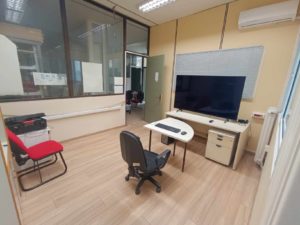 The experimental laboratory space for brain-computer interaction experiments operates according to international standards and features a modern air conditioning system to maintain temperature at desired levels, ensuring the comfort of participants. Additionally, an advanced soundproofing system has been installed to limit external noise and create a quiet environment, promoting participant concentration during experiments and the accuracy of electroencephalography measurements.
The experimental laboratory space for brain-computer interaction experiments operates according to international standards and features a modern air conditioning system to maintain temperature at desired levels, ensuring the comfort of participants. Additionally, an advanced soundproofing system has been installed to limit external noise and create a quiet environment, promoting participant concentration during experiments and the accuracy of electroencephalography measurements.
Moreover, outside the experimental area, there is a preparation room designed for pre-experiment and post-experiment briefings. This fosters an open and communicative environment between researchers and participants. Adjacent to the experimental space, there is a monitoring room where researchers can observe the experiment process and provide necessary guidance.
The Interactive Technologies Laboratory also has (in the extension of the Electrical Engineering and Computer Technology building) another space for general purpose experiments. The existence of soundproofing and air conditioning as well as spaces for observation by researchers make the space suitable for experiments and research in the field of Human-Computer Interaction.
Electroencephalography (EEG) Devices
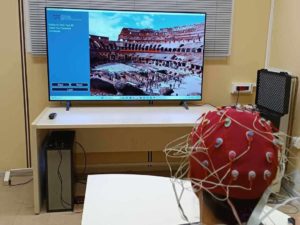 In the field of brain-computer interaction, the Interactive Technologies laboratory is equipped with the Biosemi’s 32 + 2 electrode ActiveTwo electroencephalogram (EEG). The Biosemi’s ActiveTwo system sets new standards for multi-channel and high-resolution measurements for research applications. Technological advancements have led to an increase in electrode number, digital resolution, input range, and sampling rate without any increase in size, power consumption, or cost. The second-generation active electrodes are smaller in size, offering even better specifications in terms of low-frequency noise and input impedance.
In the field of brain-computer interaction, the Interactive Technologies laboratory is equipped with the Biosemi’s 32 + 2 electrode ActiveTwo electroencephalogram (EEG). The Biosemi’s ActiveTwo system sets new standards for multi-channel and high-resolution measurements for research applications. Technological advancements have led to an increase in electrode number, digital resolution, input range, and sampling rate without any increase in size, power consumption, or cost. The second-generation active electrodes are smaller in size, offering even better specifications in terms of low-frequency noise and input impedance.


Eye-tracking Apparatus
Eye-tracker: Pupil Core
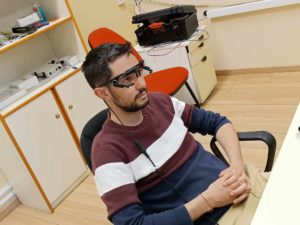
Pupil Core
Pupil Core is an eye tracking platform for monitoring ocular focus. It consists of an open-source software suite and a set of eye activity monitoring glasses. The eyewear is designed to seamlessly integrate into any study, enabling researchers and students to explore human cognition and behavior in various applications. The open-source software allows developers to create more flexible experiments that push the boundaries of academic exploration.
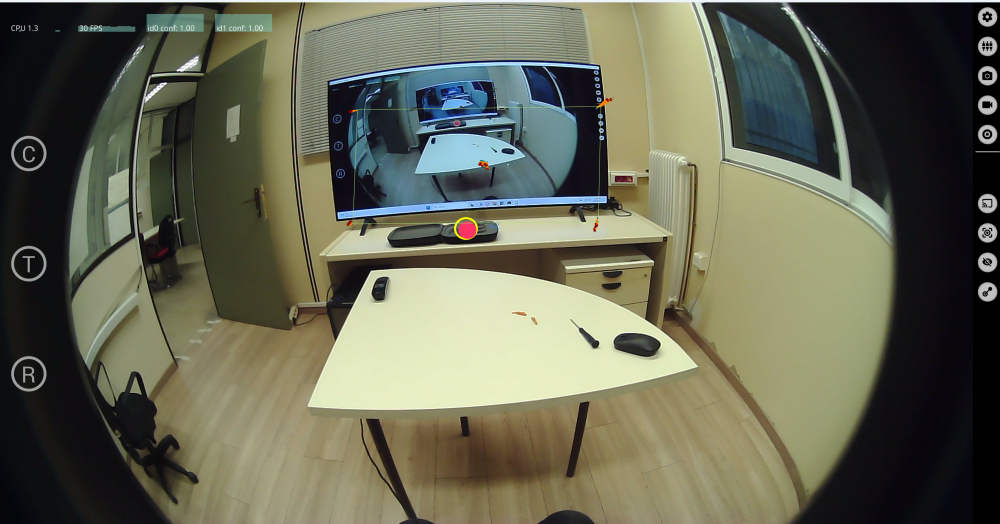
Eye-tracker: Pupil Lab’s Neon
 Pupil Lab’s Neon eye-tracker is a leading eye-tracking technology, providing exceptional precision and flexibility for academic research and innovation. Neon eliminates traditional barriers associated with eye tracking. It is easy to use, with no setup or calibration required, and is easily wearable. Its deep learning gaze estimation pipeline delivers exceptional data quality even in challenging conditions. The lightweight and adaptable design of Neon supports a wide range of research applications, from neuroscience to user experience. Its robust software platform allows for custom experiment setups, enabling a personalized approach to research that can meet the specific needs of any study.
Pupil Lab’s Neon eye-tracker is a leading eye-tracking technology, providing exceptional precision and flexibility for academic research and innovation. Neon eliminates traditional barriers associated with eye tracking. It is easy to use, with no setup or calibration required, and is easily wearable. Its deep learning gaze estimation pipeline delivers exceptional data quality even in challenging conditions. The lightweight and adaptable design of Neon supports a wide range of research applications, from neuroscience to user experience. Its robust software platform allows for custom experiment setups, enabling a personalized approach to research that can meet the specific needs of any study.
Tobii Pro Glasses 2
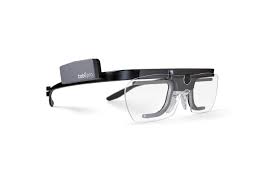
Tobii Pro Glasses 2
Tobii Pro 2 has been designed with simplicity and flexibility in mind, allowing researchers and students to easily integrate it into a wide range of studies, from cognitive science and psychology to user experience and product design. Its robust design and intuitive software ensure that even the most complex experiments are simplified and efficient. Featuring state-of-the-art sensors and sophisticated analysis software, Tobii Pro 2 provides detailed information on eye movements, pupil dilation and gaze patterns. These capabilities pave the way for understanding human interaction, decision-making processes, etc. (discontinued version).
eXtended Reality Devices
HoloLens 2
HoloLens 2 is a groundbreaking device that brings 3D holographic content into the real world, offering an unmatched interactive experience for students and researchers. It is designed for comfort and durability, allowing for extended periods of use without compromising performance. With intuitive gestures, voice commands, and eye activity tracking capabilities, users can easily navigate and interact with complex sets, simulations, and virtual environments, creating new opportunities for learning and research.
Hololens 1
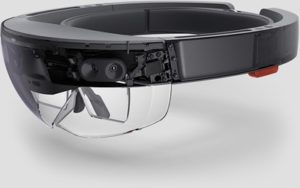
Hololens 1
Hololens 1 was the first device to revolutionise learning and exploration by combining the physical and digital worlds, creating immersive and interactive experiences that were once the realm of the imagination. Designed with academic use in mind, Hololens 1 offers a fully untethered hands-free experience, allowing students and researchers to engage with the 3D world in real time. The intuitive interface enables interaction with digital objects, bringing complex concepts to life in ways that textbooks and traditional media cannot reach.
COGNIX- Open-source services and innovative framework collecting and modeling brain signals and ocular behavior in real-time.
COGNIX stands for “Electroencephalography and Eye Gaze-driven Framework for Intelligent and Real-Time Human Cognitive Modelling”, which is a research project financially supported by the Hellenic Foundation for Research and Innovation (H.F.R.I.). CogniX aims to design, develop and evaluate a unified electroencephalography (EEG) based and eye gaze-driven framework for intelligent real-time modelling of human cognitive abilities, thus providing groundbreaking technological advances in the delivery of human cognition-centered personalization systems and significantly advance the state-of-the-art research in human cognitive modelling.


